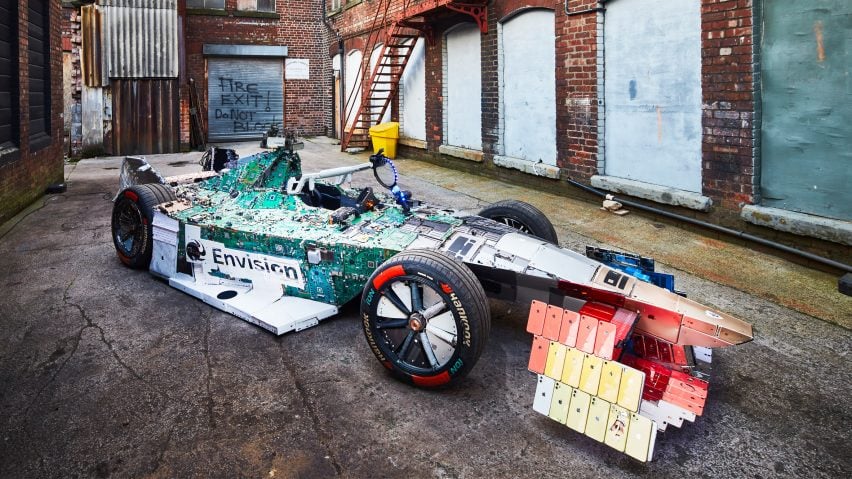
Lazerian builds racing car entirely from electronic waste
Discarded iPhones, vapes, a fly swatter and a 1950s radio form Recover-E, a replica racing car built entirely out of electronic waste by Manchester design studio Lazerian.
Commissioned by Formula E team Envision Racing to highlight the growing issue of e-waste, Recover-E uses a modified drivetrain taken from a beach buggy to enable it to drive at slow speeds.
Everyday objects are dotted all over the car, such as the driver halo made from Nintendo Wii controllers, a Sony VR headset and an electric fly swatter.
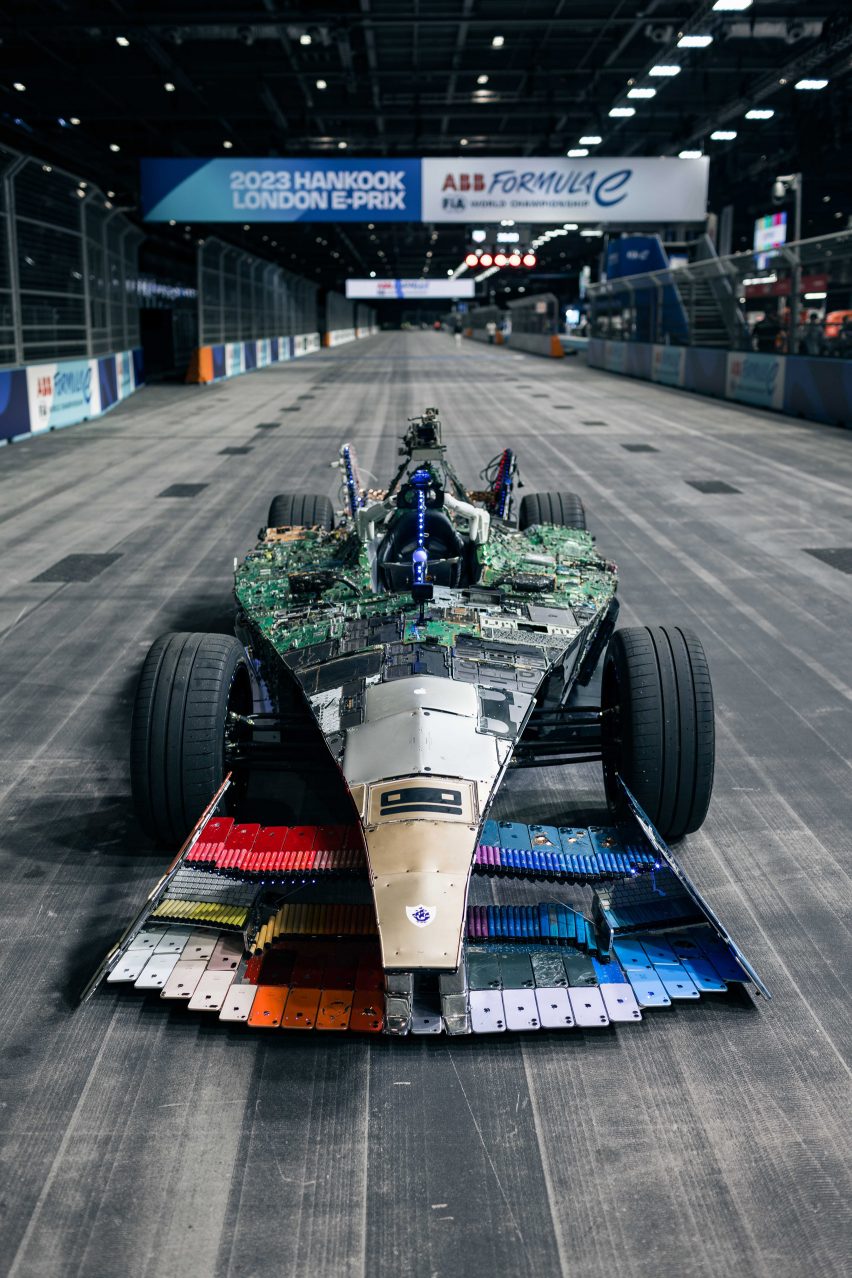
A pricing gun operates as the brake light, while a 1950s radio forms the radar antenna on top of the car.
"You can show people how much waste we all go through, but when you take it and turn it into something else it becomes this vehicle to start to trigger people's minds and actually make them think about this stuff," Lazerian founder and owner Liam Hopkins told Dezeen.
"For me it was a beautiful project to be able to create something that will get to a huge amount of people, to bring this issue to them in a way that's not forcing it down the throat."
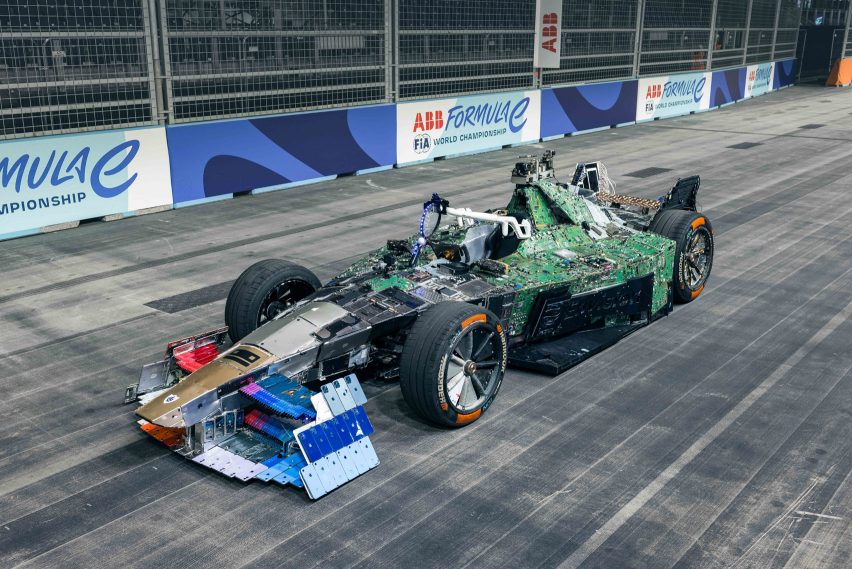
The world's annual output of e-waste is projected to reach 75 million tonnes by 2030, with the World Health Organisation sounding the alarm over the implications for children's health.
Items for the Recover-E project were sourced entirely from donations from Manchester schoolchildren and locally based tech trade-in company Music Magpie, which considered them unrepairable.
After the e-waste had been collected, Hopkins separated it into different materials, textures and colours to help decide where to use each item in the vehicle.
"I really wanted to encourage people to take things apart," explained Hopkins. "The way things are designed we've been taught not to mess – it's not encouraged for people to take stuff apart and try and repair it, we've literally turned into a throwaway society."
"Whereas we can all learn so much from taking something apart," he continued. "We see how things are made, what materials, how one thing connects to another, can we make something else from it, repair it."
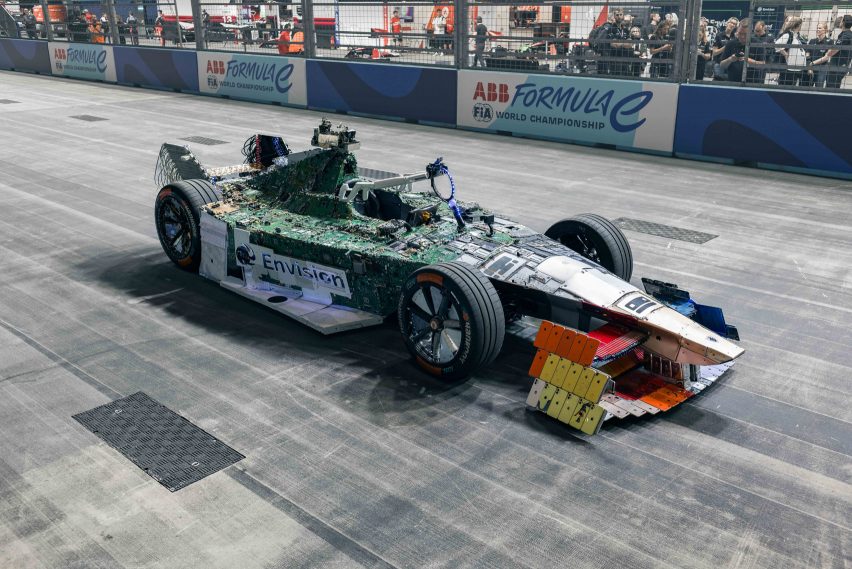
The car was designed to give the impression of gradually disintegrating from front to back.
"I wanted to have this narrative behind it where it's basically uncovering the insides of the waste," he said.
The nose and front spoilers of the car are dominated by phones in relatively good condition with their outer casing visible, with a string of LEDs running underneath that when lit make the devices appear switched on.
"As we then start to move back, it's like it's kind of starting to shed its layers," said Hopkins.
"So as we move along, it becomes the underside of the phones, the underside of the MacBooks and the laptops – the middle of the car is all these circuit boards," he continued.
"And then as we get to the back, it's literally down to components. We've got the induction charges from phones, we've got the wires, we've got screens. So I wanted it to convey that message of these things being taken apart."
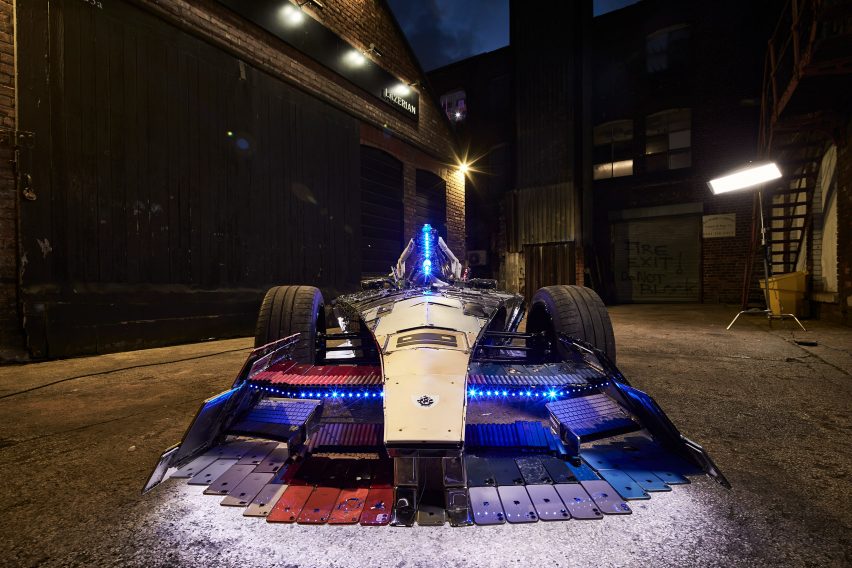
Disposable vapes, some of which were used just two or three weeks before the car was built, also make up part of the car's components. An estimated 1.3 million of the electric nicotine products are thrown away every week in the UK alone.
Hopkins believes that single-use vapes, with their rechargeable lithium batteries that do not get recharged, are a prime example of society's problematic relationship with electronic goods.
"We have an issue now where it's so easy to buy stuff so cheap, and there's no value in it," he argued. "You use it for five minutes, an hour, and then it's chucked away when there's still so much more life in these things."
"There was some nice symbolism behind having this fast-moving vehicle and the fast-paced society that we're all in, and hopefully as much as it's a beautiful thing to look at, it's also a scary thing to think about," he continued.
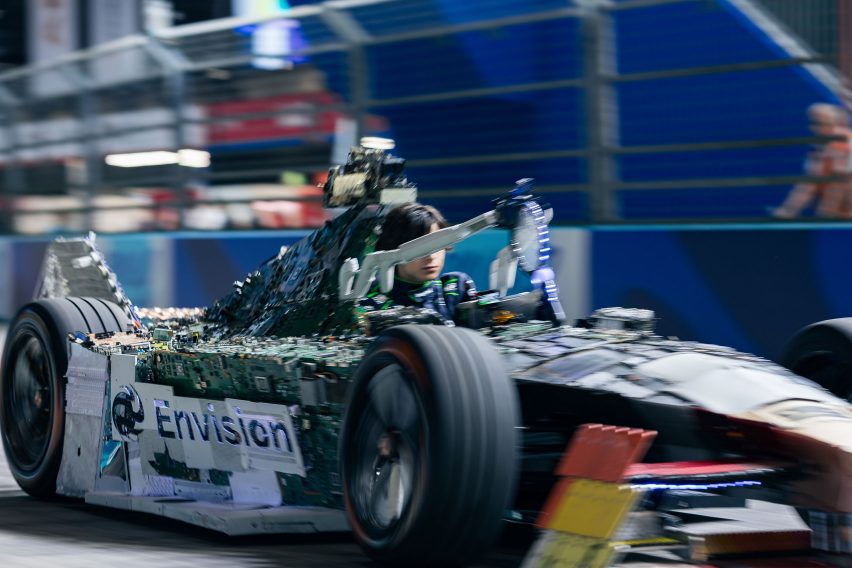
Hopkins' projects have often explored re-use of waste materials, including an earlier collaboration with Envision Racing to build a non-drivable replica Formula E car from plastic waste, but Recover-E is his first focused on e-waste.
The car was unveiled on the eve of the London e-prix at the ExCel centre in late July and will be exhibited at a series of events, including global climate summit COP28, before it is disassembled for recycling.
Electric-car racing championship Formula E has been declared the first net-zero global sport based on an assessment by sustainability consultancy Quantis.
Other projects previously featured on Dezeen that seek to draw attention to the issue of e-waste include a chair made from discarded laptops, furniture created from e-scooters dumped in a canal network and tiles produced from recycled oven glass.
The photography is courtesy of Envision Racing.